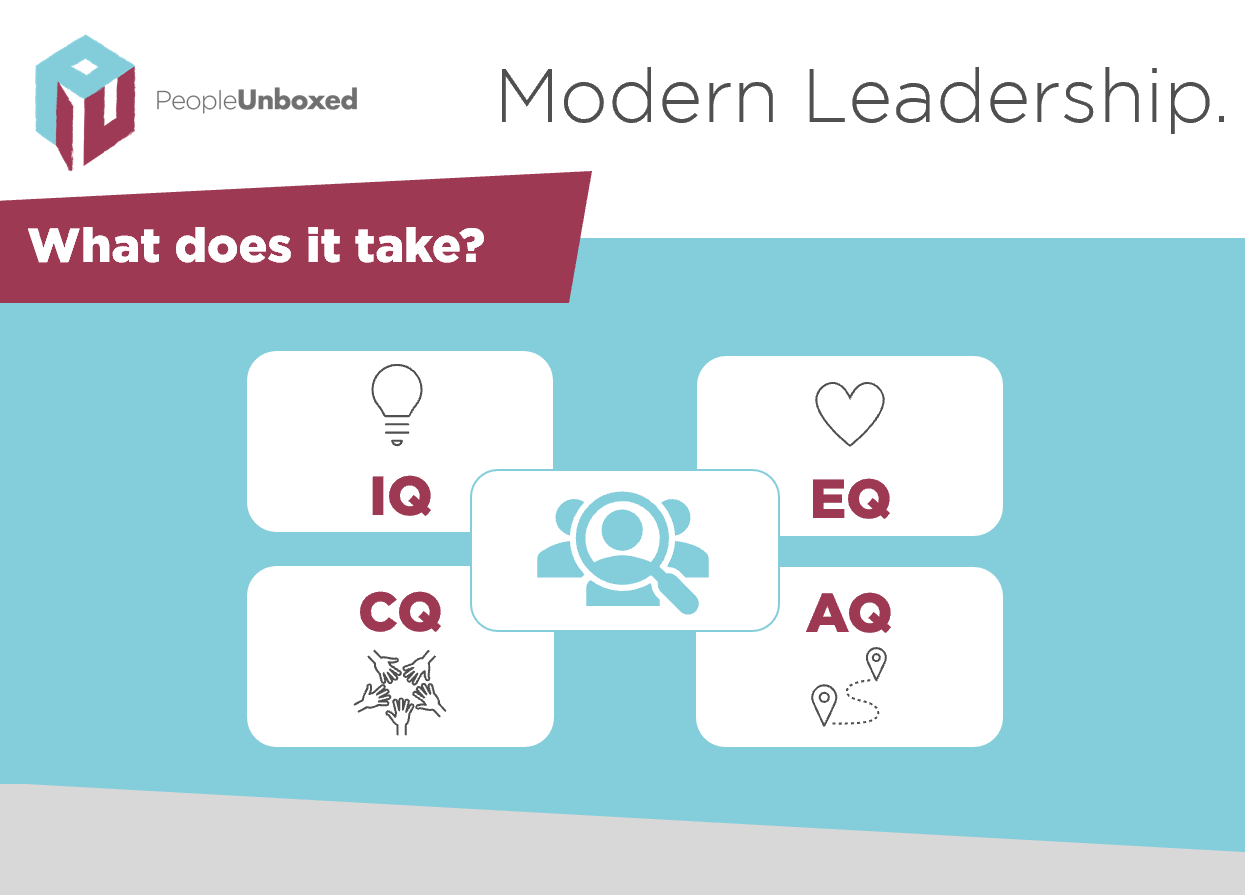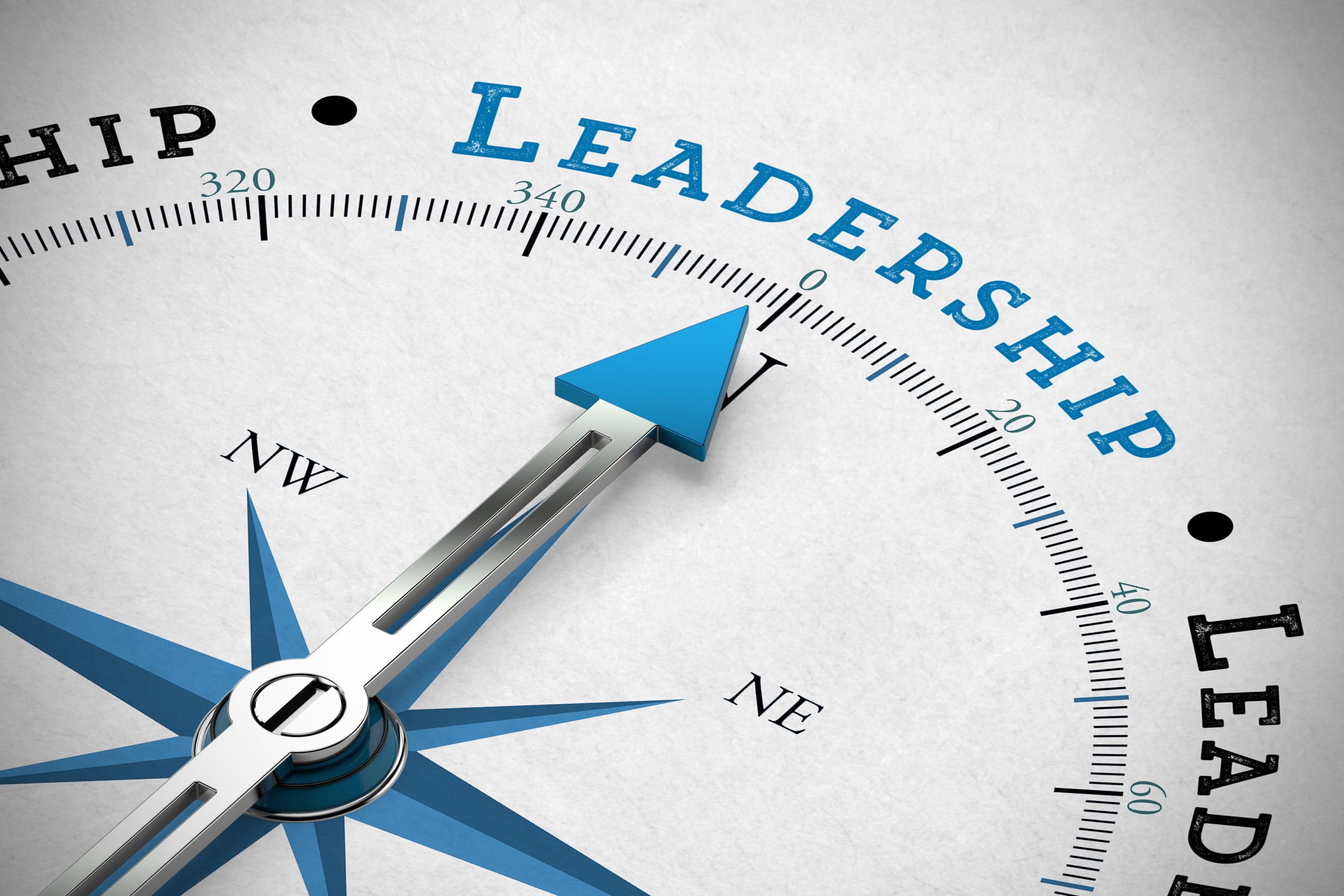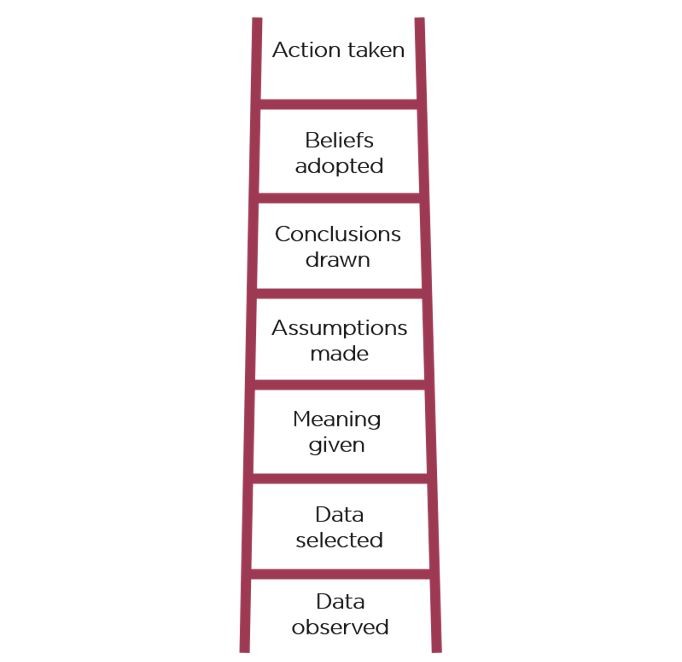
As the wants and needs of employees continue to evolve, so must the leadership styles that engage, empower and inspire them.
There are certain traits, behaviours and characteristics that remain, and always will remain, completely synonymous with great leadership. However, there are also several attributes seen as crucial in today’s business climate that were previously at best considered preferable, and at worst not considered at all.
From my experience of working with thousands of employees and leaders across all types of businesses large and small, a modern-day leader requires a blend of four key skills – intellectual intelligence (IQ), emotional intelligence (EQ), cultural intelligence (CQ), and adaptability intelligence (AQ).

Intellectual intelligence (IQ) is the most traditional of these four and, despite its importance being played down over recent years, still plays an important role. Employees must have faith in the competence of their leader if they are to follow them, and demonstrating knowledge and a deep understanding of the business and wider market goes a long way to building this confidence.
Emotional intelligence (EQ) is a topic that has been growing in awareness and popularity since Daniel Goleman published his best-seller in 1995. The value in recognising the emotions of ourselves and others, and self-managing to build relationships is clear for all to see.
Cultural intelligence (CQ) is a newer idea. This principle continues the EQ theme of understanding people, but extends to digging deeper to truly empathise with another person’s perspective. In a world of remote working that continues to break down borders and ramp up international collaboration, a focus on creating a diverse and inclusive environment is key and increasing CQ can help to begin that journey.
Adaptability intelligence (AQ) has suddenly come to the forefront of people’s attention, not surprisingly given the current changeable climate. With many organisations unsure about what their business model will even look like in three months’ time, leaders must have the agility to flex at a moment’s notice and the ability to bring their teams on that journey with them.

So, what can we do to grow and develop each of these four areas? Based on what I’ve seen work, here are my three top tips for each area, that I believe can have the greatest impact on leaders developing and honing these skills.
IQ
1. Develop a growth mindset
Have a genuine desire to continually learn more and aim to become a subject matter expert in your field. Research different sources, ask questions and don’t be afraid to look silly finding out more. Step outside of your comfort zone, practice new skills, and learn from your mistakes.
2. Proactively ask for feedback
Get used to receiving constructive feedback to the point where you enjoy it and see it as a gift. An opportunity to learn about yourself, how you are perceived and where you can improve. If you don’t know about it, you can’t change it, so ask people to be honest with you about how you can be a better leader within the business.
3. Challenge assumptions
Research different perspectives to form an opinion based on evidence and facts. Invest enough time into understanding situations, digging into the root cause of issues and exploring the different possible solutions, rather than rushing into action based on assumptions (your own or others’) which may not have the desired impact.

EQ
1. Understand self and adapt

Take time to reflect on your own personal values and what things trigger an unwanted emotional response or behaviour from you that may damage working relationships. You can use Chris Argyris’ Ladder of Inference model to understand how your chimp brain affects your judgement, and challenge the assumptions you make as you come back down the ladder in order to adapt your behaviours.
2. Understand others and adapt
Use listening skills and empathy to identify the true feelings of others in your team. Try to understand their values and triggers and be considerate of these during your interactions with them.
3. Build your positive intelligence
Shirzad Chamine’s positive intelligence is an extension of emotional intelligence focussed on mental fitness, a measure of the strength of your positive mental muscles (sage) versus the negative (saboteurs). Take time to self-assess and understand which of the ten saboteurs are most prominent in you.

CQ
1. Recognise own biases and impact
Although bias is often unconscious, there are things you can do to increase self-awareness – Project Implicit’s Implicit Association Test (IAT) can be very enlightening in this regard and is well worth a look. Once you become more aware of your biases, you can attempt to recognise your triggers arising from interacting with that particular group of people and any actions that could be deemed as discriminatory or non-inclusive.
2. Develop cultural awareness
Develop cultural awareness by expanding your network, by showing a genuine interest in others and by researching more on the subject. Julia Middleton’s Ted Talkon this subject is a great place to start, and Hofstede’s 6 Cultural Dimensions allows you to compare countries in terms of their preferences for one state of affairs over another.
3. Create a diverse and inclusive environment
Review recruitment practices, career progression decision-making processes, and day-to-day working practices to ensure equality and inclusion. Focus on developing a culture where employees feel a sense of belonging and being valued for their individuality and the unique perspective they can offer.

AQ
1. Be proactive towards change
Don’t be impacted by change, make it happen! If you can be someone that regularly challenges the status quo and looks for new and improved ways of working, you will be in control of the direction of change. You’ll also get used to changing situations and will feel more comfortable with uncertainty.
2. Build creativity
Innovation is what sets outstanding organisations apart from the rest. Challenge the norm every day and think outside of the box, rather than going with the usual, safe ideas. Use brainstorming and creative thinking techniques regularly to solve challenges and create a culture of creativity where team members are encouraged to share new ideas.
3. Focus on the big picture
Don’t lose sight of long-term missions or objectives. Although the landscape and strategy may change, the approach must still meet the end goals and align with your own personal and company values.

Like anything, what you put in is what you get out. The tips covered above are not overnight fixes, they are deep-rooted skills that need to be developed over time. Don’t try to tackle everything at once, focus on a couple of key areas that resonate with you and give them a try!




